
by Sentimenti Team | Sep 17, 2024 | Politics and Social
The presidential debate between Kamala Harris and Donald Trump continues to spark widespread interest. While many commentators are focused on determining who won the debate, we take a different approach – what emotions dominated during their speeches? With Sentimenti’s tools, we can accurately measure emotions and sentiments to reveal what truly lay behind the candidates’ words.
Our analysis is based on the debate transcript prepared by ABC News, which can be read here: ABC News – Harris-Trump Presidential Debate Transcript.
Sentiment and Arousal: Key Indicators of Emotion in the Presidential Debate
The foundation of our analysis is the measurement of sentiment and emotional intensity (arousal). But what exactly does that mean? At Sentimenti, we analyze both positive and negative sentiments, allowing us to determine whether a given text conveys positive or negative emotions. Arousal, on the other hand, measures the intensity of these emotions – the higher the arousal, the more emotionally charged the statements are.
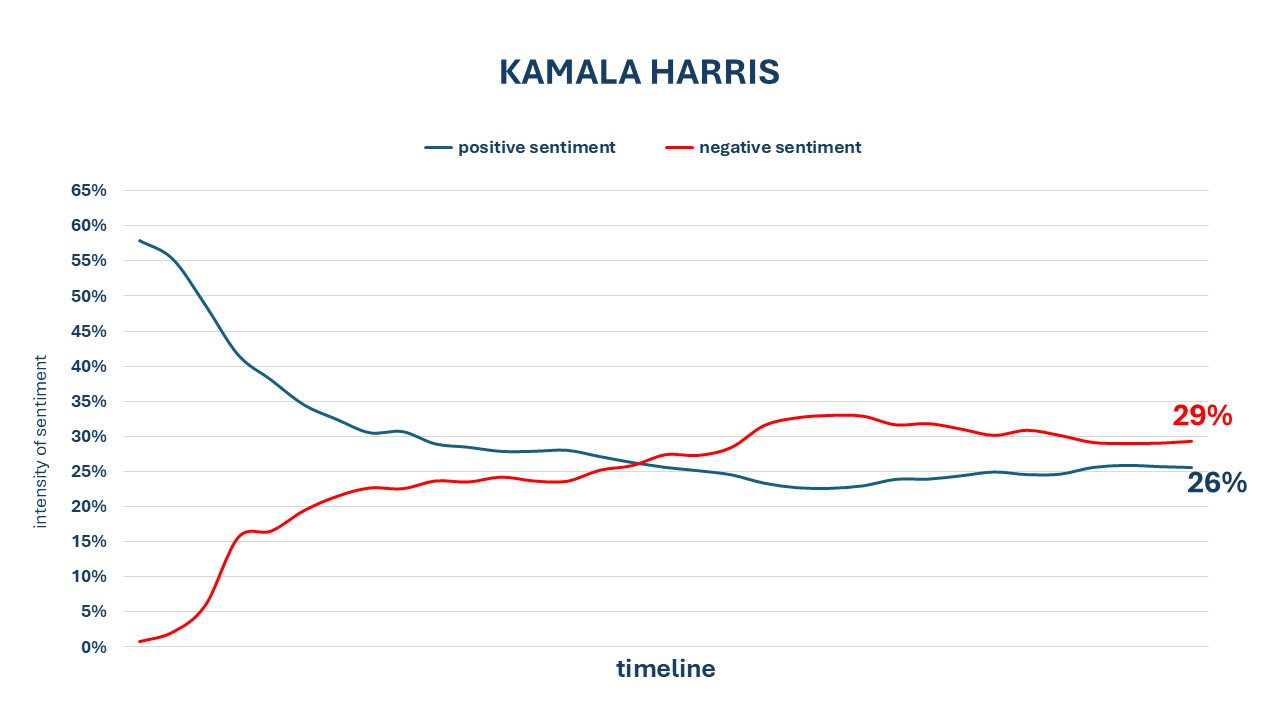
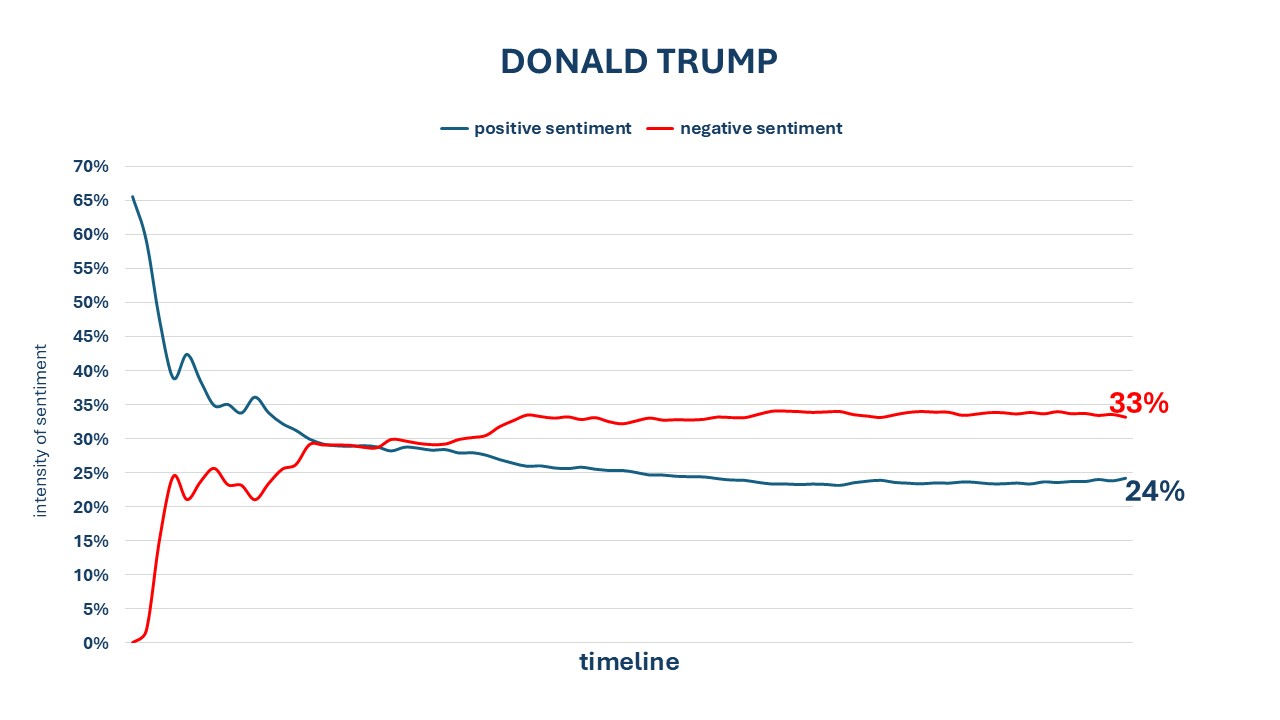
At the start of the debate, both candidates seemed to maintain a positive tone. Harris began with a sentiment score of 58%, while Trump started at 66%. But that was just the calm before the storm. As the debate progressed, things became increasingly intense, with Trump being the first to launch an attack. Harris responded in kind, and the tone of the discussion shifted toward more negative sentiment.
When it comes to arousal, Harris started the debate with a more composed demeanor. However, as time went on, the intensity of her statements matched Trump’s, and this equilibrium persisted until the end of the debate.
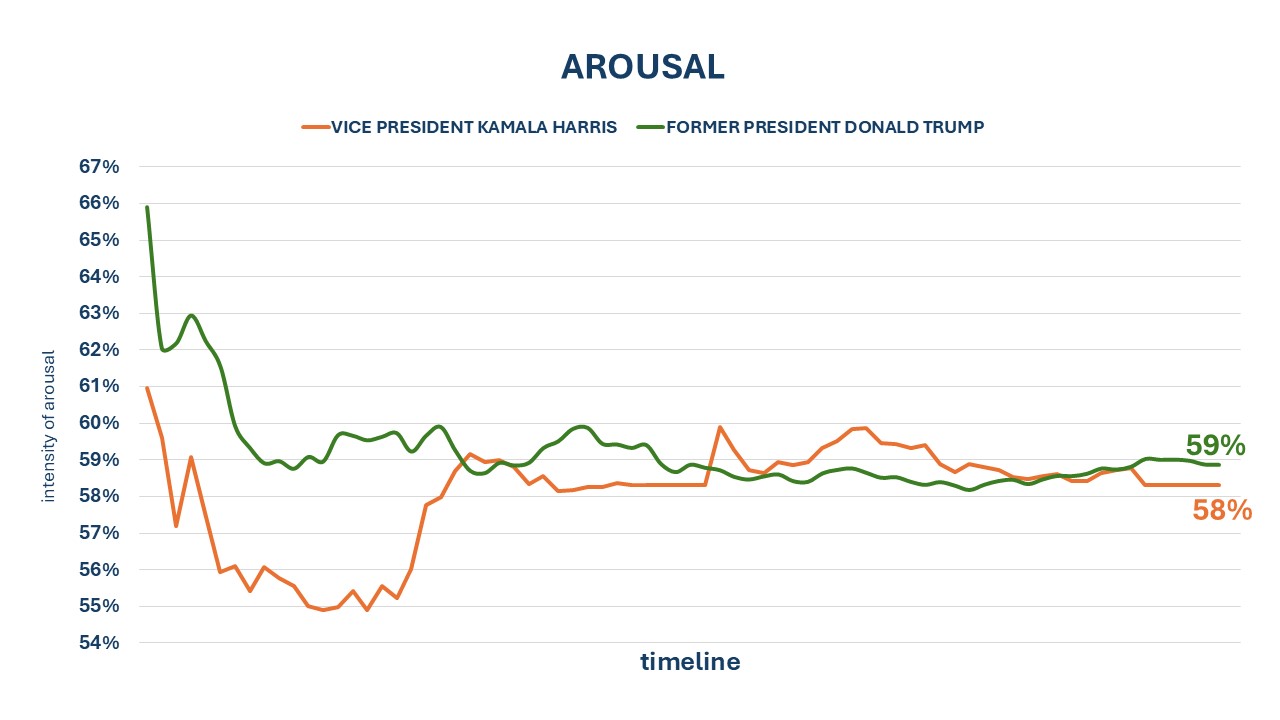
Sentiment vs Emotion: What Feelings Dominated the Harris – Trump Debate?
While sentiment is important, it’s equally critical to analyze specific emotions. We focused on two opposing emotions, according to Robert Plutchik’s theory: trust and disgust. The results are fascinating.
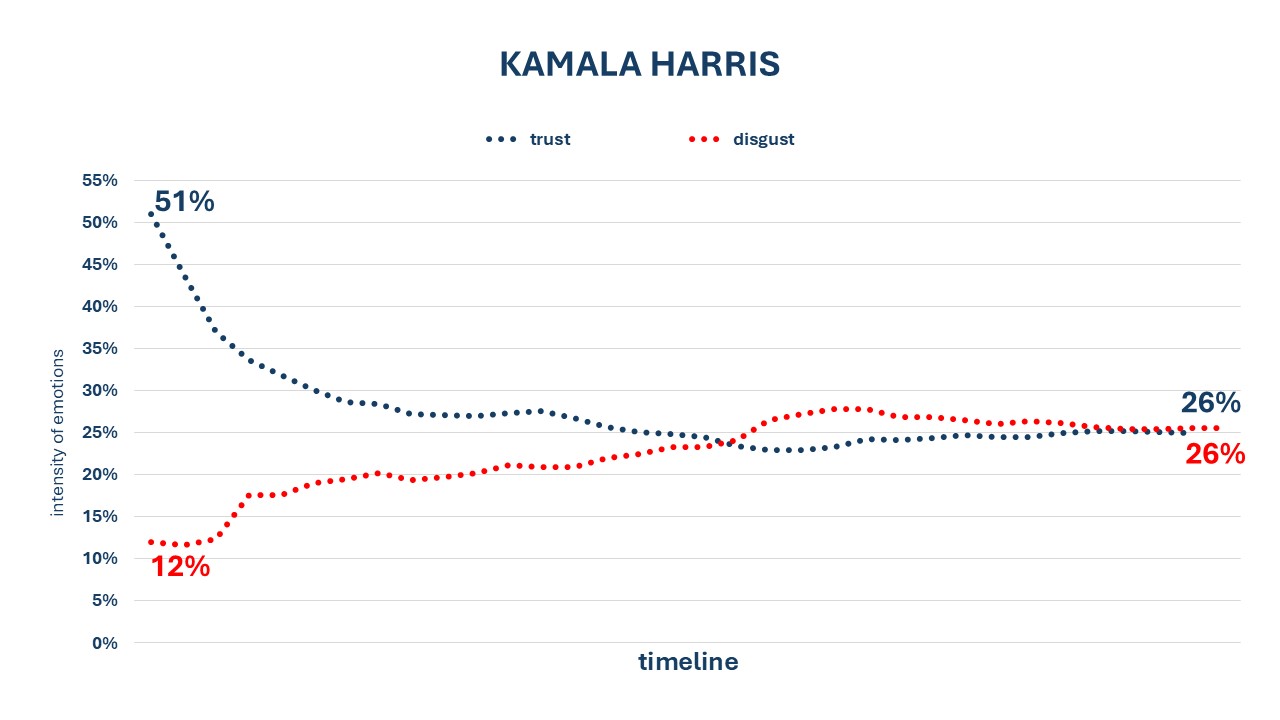
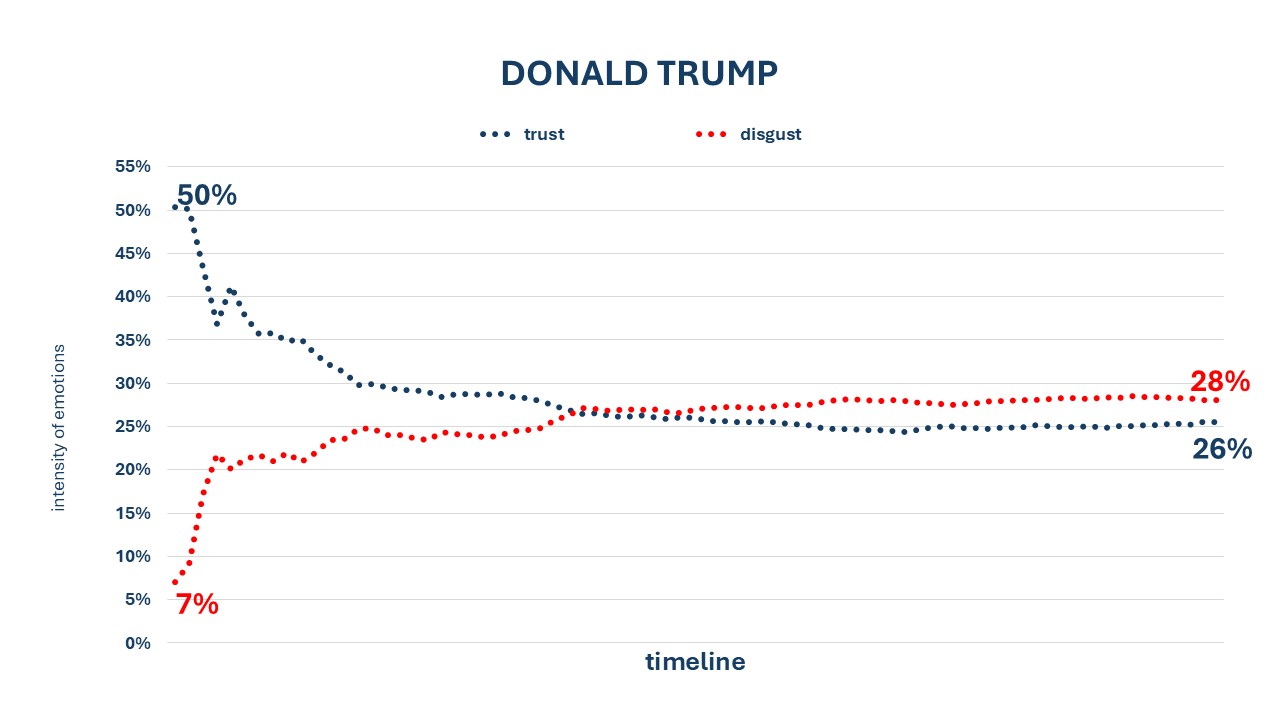
Initially, both candidates attempted to evoke trust, particularly when discussing their own policy proposals. However, as time passed, the emotion of disgust began to take over, especially in their criticisms of each other.
During the Q&A portion of the debate, the strategy of negating the opponent became the primary approach for both candidates. Ultimately, trust was overshadowed by disgust, giving the debate an increasingly sharp and confrontational atmosphere.
Emotion Analysis in the Candidates’ Final Statements
As with any debate, this one ended with final statements. These segments are often seen as the most memorable moments for viewers, so we analyzed them separately.
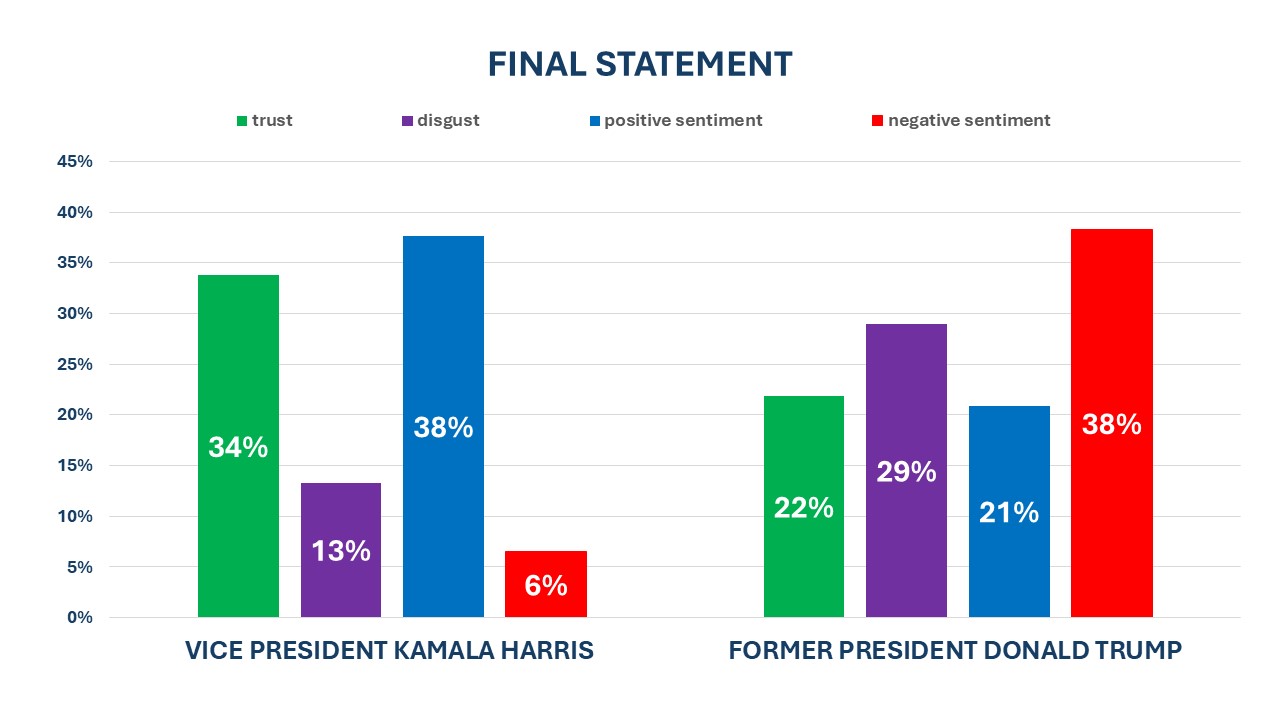
Kamala Harris, in her final statement, focused on promoting positive solutions and highlighting her proposals, while avoiding direct attacks on Trump. As a result, her positive sentiment and trust emotion surged compared to the responses she gave earlier in the debate. Donald Trump, on the other hand, remained within the same negative narrative framework, focusing on attacking his opponent. This led to the dominance of disgust and negative sentiment in his closing remarks, making it difficult for him to present his own solutions in a way that evoked trust or positive sentiment.
Conclusion: How Emotions Shape Political Debates
The emotion analysis of the Harris – Trump presidential debate shows how emotions can shape the perception of political discussions. Initially, the candidates started with positive sentiment, but this gradually gave way to more negative emotions, particularly disgust. Both candidates consciously used emotions to elicit specific reactions from the audience.
Curious to learn more about how emotions impact your content? With Sentimenti’s tools, you can precisely measure emotions in texts and better understand how your words affect your audience.

by Sentimenti Team | Sep 4, 2024 | Politics and Social
Does sentiment analysis always tell the truth? Sentiment analysis is a popular tool that helps understand how users react to social media content. However, is it always fully reliable? We analyzed reactions to The New York Times’ post on Platform X regarding the platform’s potential ban in Brazil to see what lies behind the emotion expressed in the comments.

Comments under the above post (formerly a tweet – we miss a bit😉) appeared in both English and Spanish, so we analyzed them all.
What does sentiment analysis say in the comments?
A preliminary analysis of the NYT entry shows that positive sentiment prevailed, with 31% of the content carrying positive emotion and only 12% being negative. At first glance, one would think that the reception of the entry would be similar.
However, an analysis of the comments under the post reveals a very different reality. As many as 62% of the comments were characterized by negative sentiment, while only 38% had positive overtones. This means that despite the positive tone of the post itself, readers’ reactions were mostly negative.
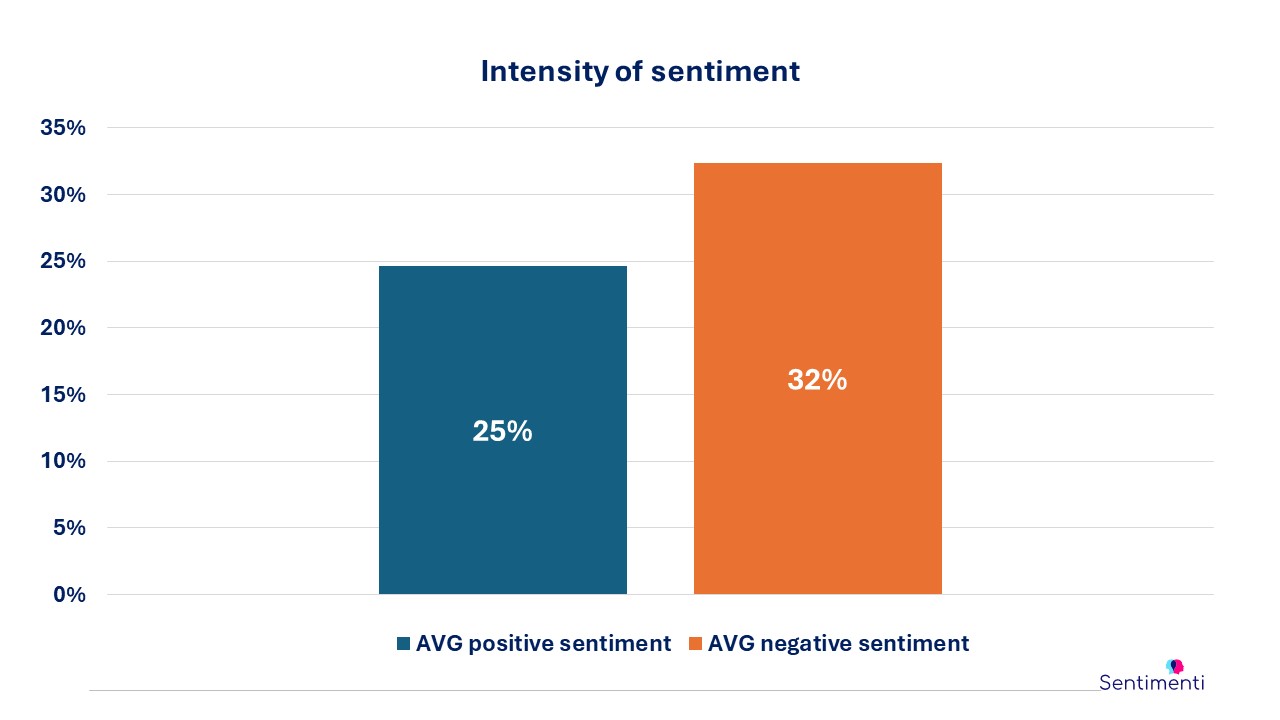
Such data may suggest that the majority of users have negative feelings about a post, but analysis of sentiment alone does not tell us why. Are the comments full of anger, sadness, surprise? Or do they express revulsion or disappointment? To fully understand what viewers really feel, we need a more detailed analysis of emotion.
The emotions behind the negative sentiment
An analysis of the emotions in the comments shows that the main emotions responsible for negative sentiment were anger and sadness. We can trace this by analyzing the average value of each emotion and the comments with the highest and lowest intensity of emotion.
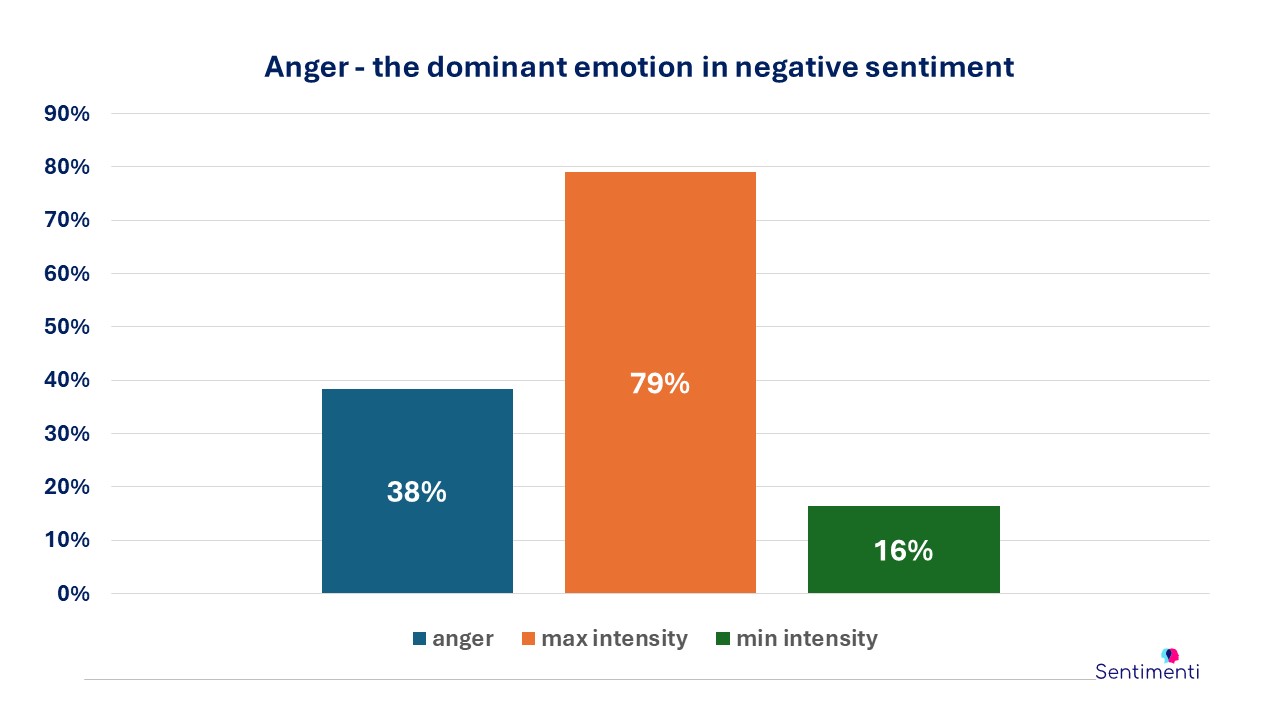
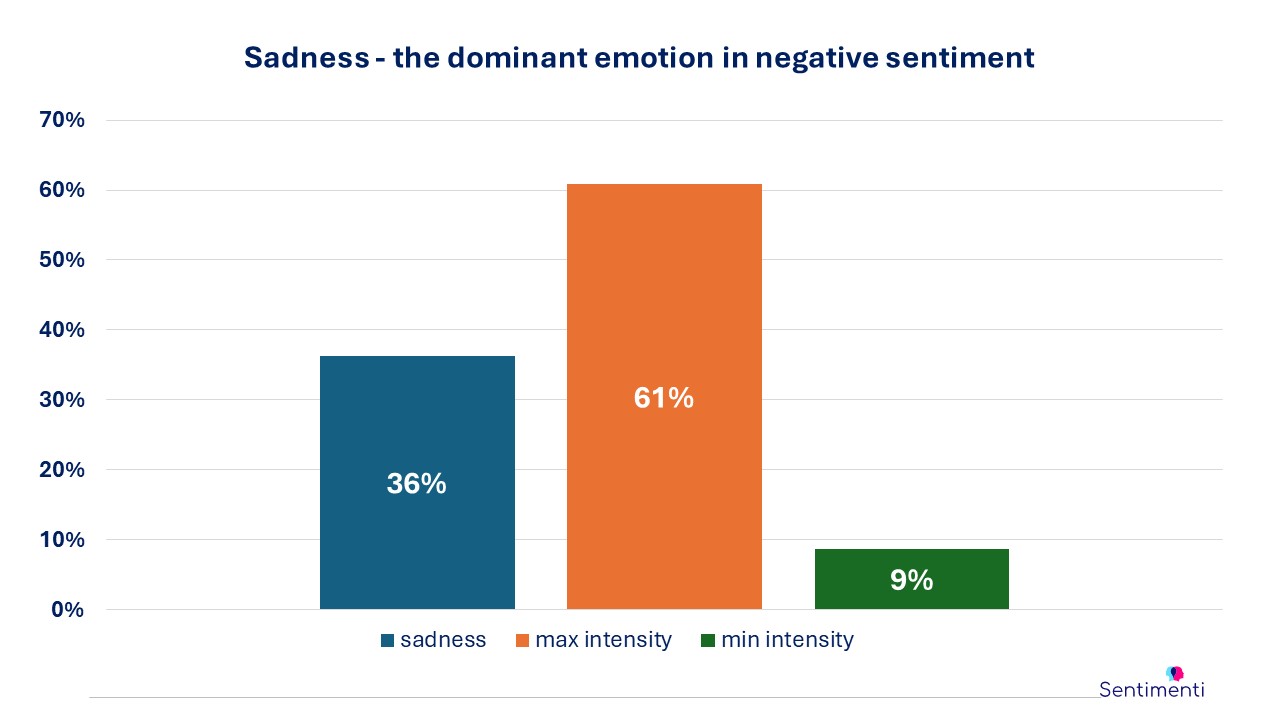
With this tool, we can not only see what emotions are dominant, but also identify exactly towards what or whom they are directed. In our case, anger and sadness were directed towards both the Brazilian government and the person Elon Musk.
For the sake of illustration, we analyzed a number of comments in which anger and sadness dominated in order to understand what specific issues aroused these emotions. Anger mainly concerned the decisions of the Brazilian authorities, which may affect the banning of Platform X. Sadness, on the other hand, came in the context of concerns about the future of freedom of expression and the impact Elon Musk has on the operation of the platform. With such data, we can indicate how strong readers’ views and emotions are.

And now analyzing the content of the comments, we can conclude that the negative sentiment, dominated by anger and sadness, was directed towards both the broader Brazilian authorities and the person of E. Musk. And having data on the intensity of selected emotions, we can even indicate the level of strength with which readers’ views are expressed.
Arousal – a measure of reader engagement
Another important indicator to consider is “arousal,” or the level of emotional involvement in the discussion. Stimulation measures the intensity of emotion – the higher the value, the stronger the reactions of commenters.
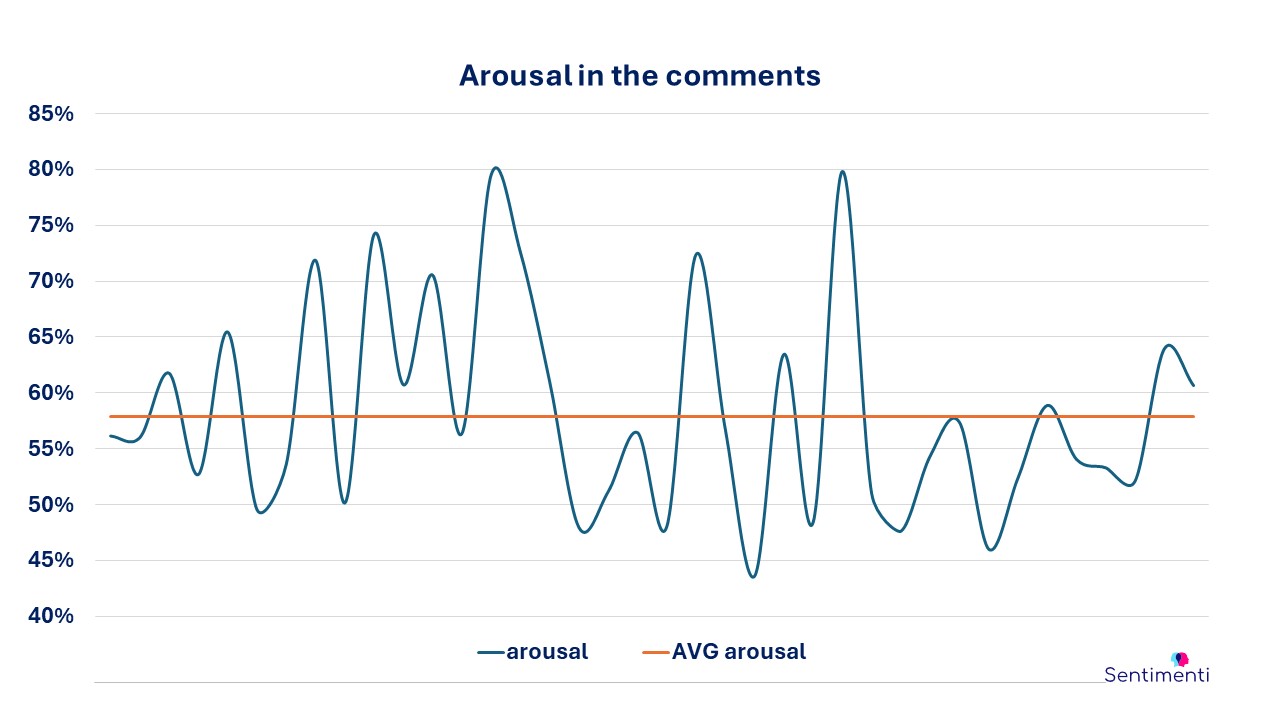
In the case of the entry analyzed, the average level of agitation was 58%, which means that the comments were clearly emotional. The range of agitation ranged from 44% to 80%, showing that most commenters were heavily involved in the discussion. As many as 79% of comments had agitation above 50%, indicating strong emotion in the debate.
Conclusion – is sentiment analysis enough?
Based on the above results, we can see that sentiment analysis alone does not give a complete picture of user reactions. While it can indicate whether comments are positive or negative, it does not tell us what specific emotion is behind those reactions.
Analyzing emotions, such as anger, sadness or surprise, is essential to better understand why people react in certain ways. In this case, we can see that anger and sadness were related to specific issues, such as the actions of the Brazilian government or Elon Musk’s attitude.
Therefore, in order to get the full picture, it is worth reaching for more advanced emotion analysis tools, which we are developing at Sentimenti with the help of artificial intelligence. By doing so, they will help us better understand what Internet users really think and are driven by.

by Sentimenti Team | Aug 21, 2024 | Politics and Social
On Platform X, The New York Times (NYT) has swept the post: „Donald Trump has boasted that, if he returns to office, he will dispatch forces to patrol the border, suppress protests and fight crime. His vision of using the military to enforce the law domestically would carry profound implications for civil liberties.”

Let’s take a look at the emotion in the comments under this post:
Sentiment in reader comments
We investigated what sentiment this post triggered in the audience – users of Platform X. For this purpose, we analyzed the comments posted under the NYT entry. In addition to the quantitative structure, we measured the intensity level of the sentiment expressed in the comments. The average intensity of negative sentiment was significantly higher than the average intensity of positive sentiment.
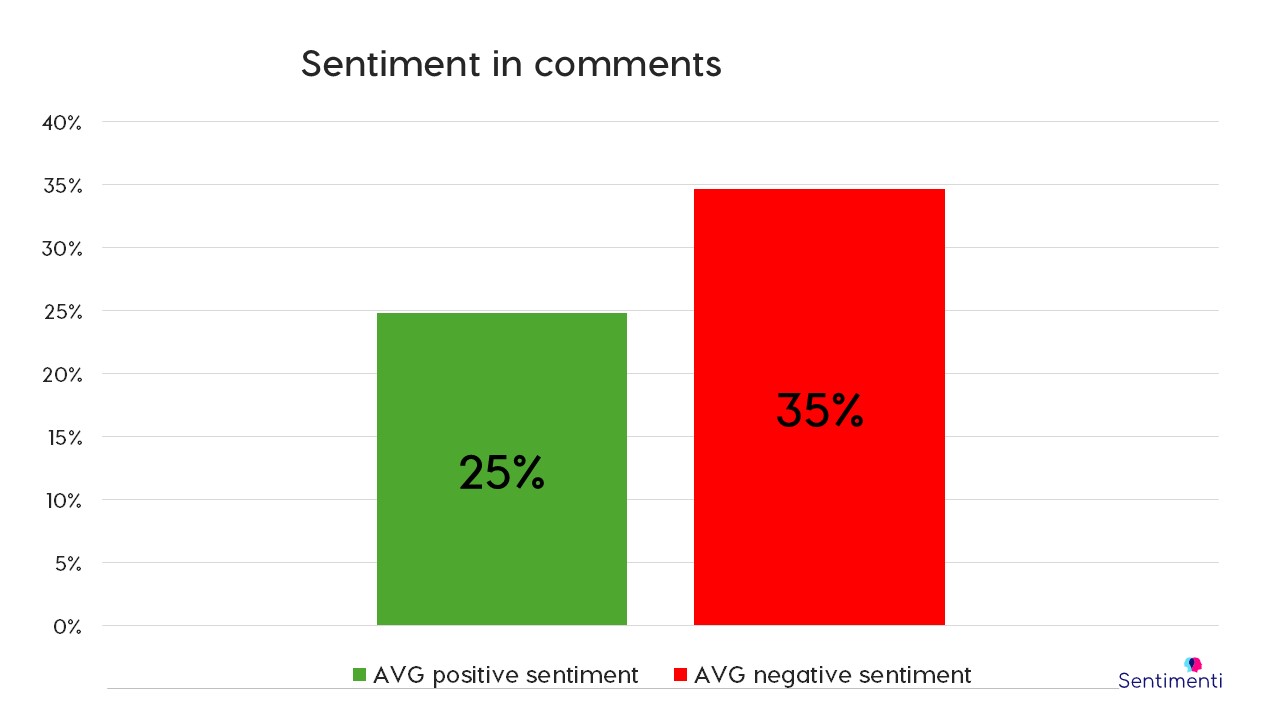
This simple measurement, however, does not answer the fundamental question: what did the readers-consumers of the NYT specifically feel when they read the posted entry. What emotion did the text evoke in them and does it matter in the evaluation. Only an in-depth analysis conducted in terms of measuring individual emotions provides an answer to such a question.
Dominant emotions in reader comments
The emotions we can measure include anger, fear, anticipation, surprise, trust, sadness, disgust, or joy. They are both components of positive or negative sentiment. Therefore, only the measurement of their intensity shows what we can expect from the behavior of their “owners.” After all, we react dramatically differently when we feel sadness (withdrawal) and when we feel anger (action). By merely concluding that negative sentiment prevails, we can infer very little. But to the point:
In the case studied, the dominant influence on the level of intensity of positive sentiment was the emotion of anticipation. Its intensity varied depending on the content of the comment and ranged from 10% to 58%.
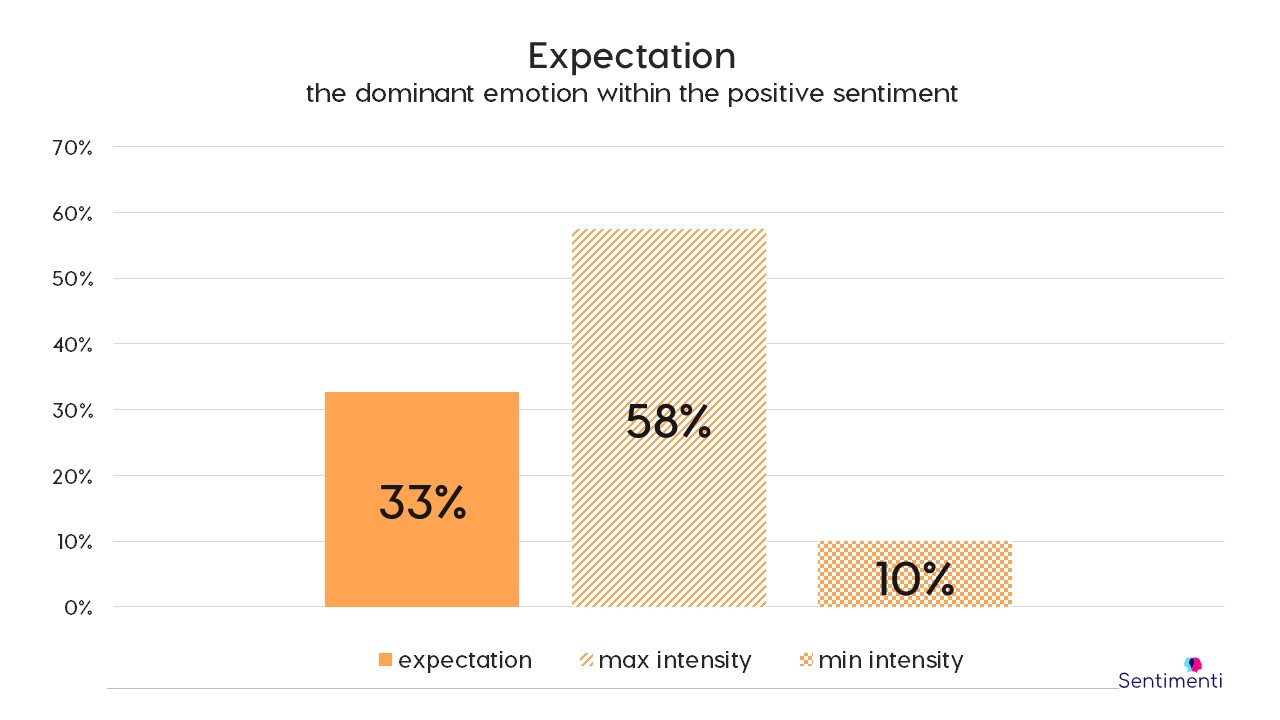
In the case of negative sentiment – its level was decisively influenced by the emotion of anger expressed in the comments. Its intensity, as in the case of expectation, varied, ranging from 14% to 87%.
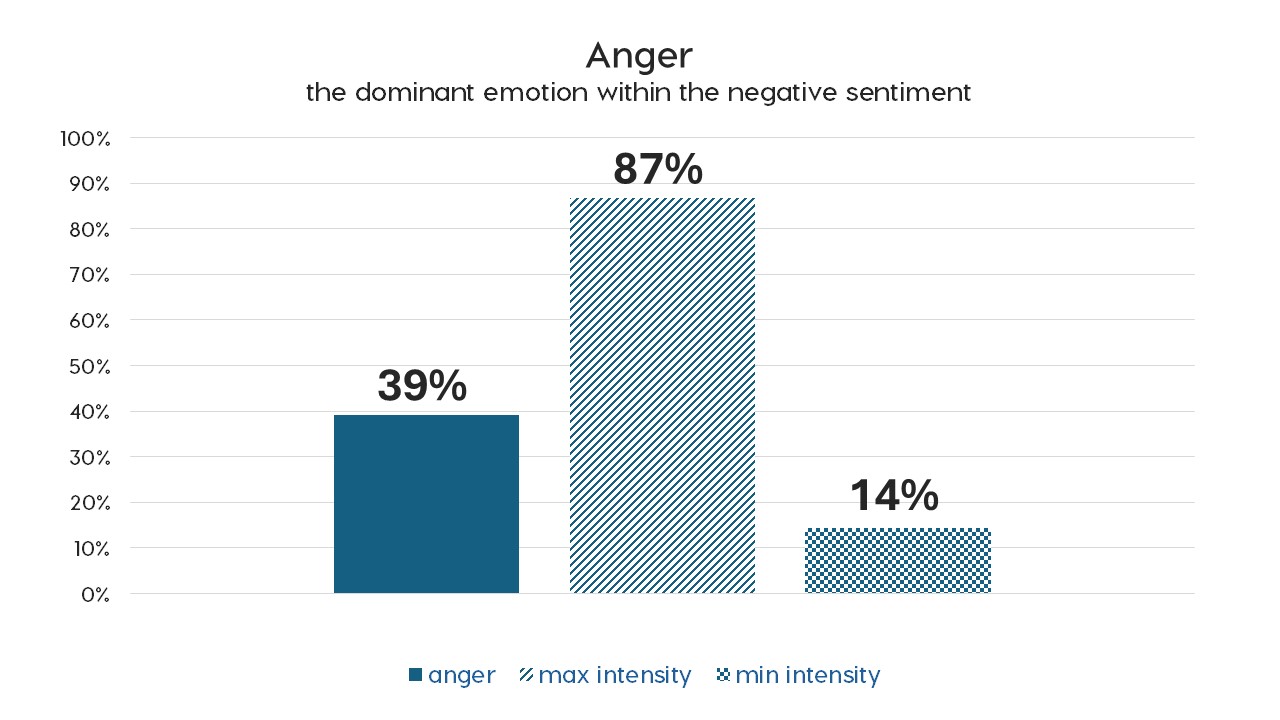
As can be seen from these measurements, the intensity of anger was stronger than the intensity of expectation in all cross-sections, and this built the overall negative perception of the information contained in the NYT entry.
Arousal – a measure of the involvement of comment authors
In addition to analyzing sentiment and the individual emotions that make it up, arousal was also measured, which was saturated with the content of readers’ comments. Stimulation most simply shows the level of engagement with which content authors express themselves. In this case, the average intensity of arousal remained very high reaching 59%.
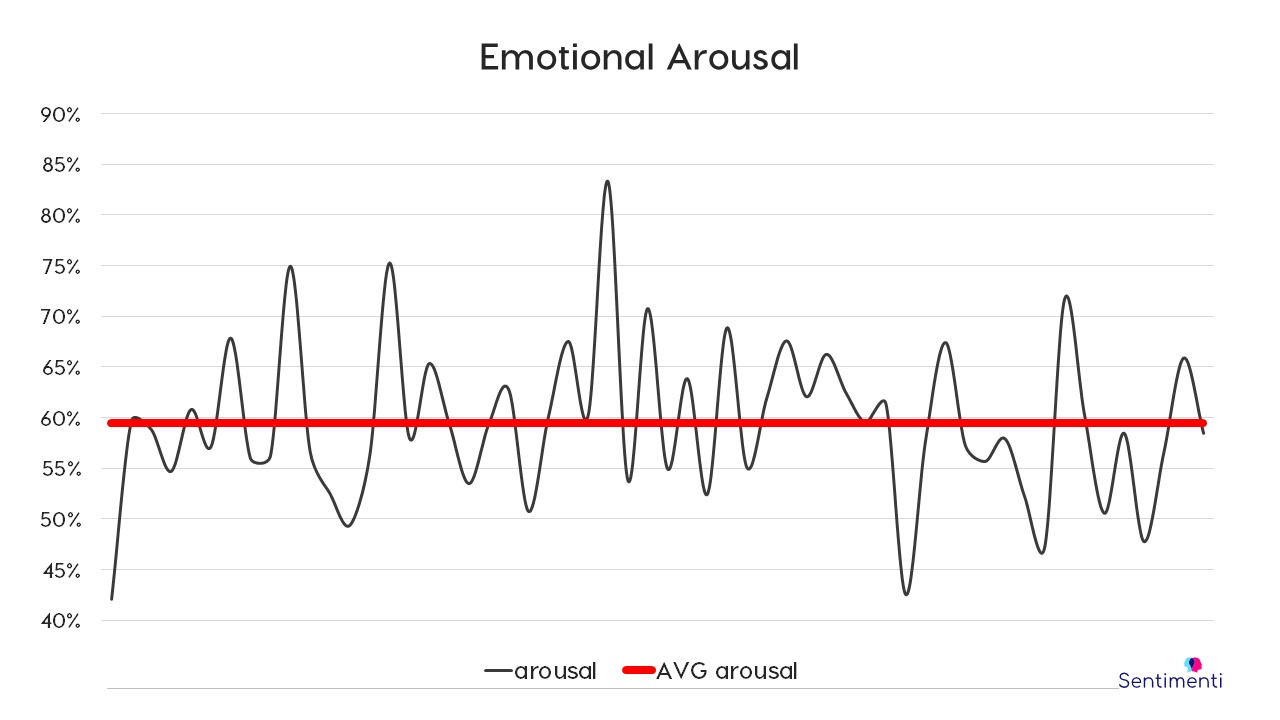
In the case of arousal, too, there is a wide variation – a reflection of the commitment with which the individual author of the commentary expressed himself. The range of arousal intensity was from 42% to 83%. This, as well as the average intensity value, shows that the NYT entry triggered the need for readers to respond saturated with a very high layer of engagement.
Conclusion
Measuring sentiment alone is not enough to conclude how the author or authors will behave. Anger, present in the comments analyzed, suggests a strong commitment for the commenters, even indicating a desire to change the situation, an impulse to action triggered by the message. If, on the other hand, the dominant emotion was sadness, also seen in the category of negative sentiment. The conclusions could be quite different – indicating withdrawal of the majority of commenters, resignation and reluctant but acceptance of the state of affairs.
From an analysis of sentiment alone, all this will not be deduced and, most importantly, we will not learn about the future intentions of the recipient, reader or commenter, measuring only his mood, without going deeper, into emotions.

by Sentimenti Team | Nov 6, 2023 | In the media, Podcasts
Intro: Emotions play a huge role in investors’ decisions. And it’s behavior that influences the course,” says on the waves of the MamStartup Podcast our guest today, Grzegorz Stefanski – financial advisor to the board of Sentimenti.
Author: Hanna Baster
Place and date od publication: Mam Startup, 19-07-2023
Article link (Polish)
Youtube (Polish)
Spotify (Polish)
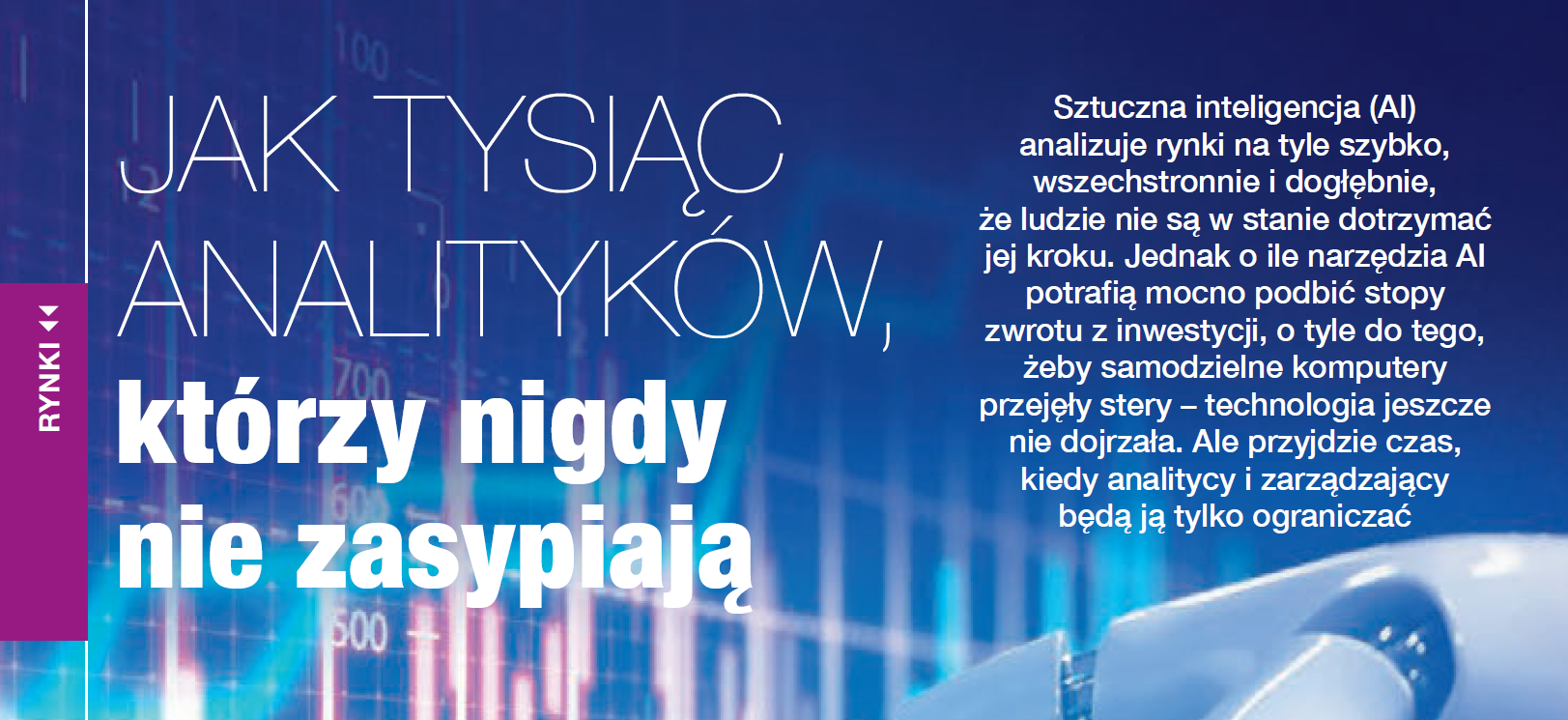
by Sentimenti Team | Jun 29, 2023 | In the media
Intro: Artificial intelligence (AI) analyzes markets with such speed, comprehensiveness and depth that humans can’t keep up with it. However, while AI tools can strongly bump up investment returns, for standalone computers to take over the reins – the technology has not yet matured. But there will come a time when analysts and managers will only limit it.
Author: Natalia Chudzyńska-Stępień
Place and date of publication: Forbes Polska, 07-2023
Link to the article
Download article





















